In the 16th century, the land of Thuan Minh and Tho Lap communes, Tho Xuan district, Thanh Hoa today was the resistance capital named Van Lai - Yen Truong. For nearly 500 years, the capital played an important role in the restoration of the Le dynasty but seems to be forgotten.
With the desire to find historical values in the resistance capital, Dan Tri newspaper reporters, along with researchers Hoang Hung and Phan Thanh, witnessed and studied documents and remaining evidences... through a series of articles: Van Lai - Yen Truong, the capital in times of chaos:
Nam Giao Altar - the place "opening the door to heaven"
On the winding red dirt road, Mr. Hoang Hung - Chairman of Tho Xuan Science - History Association and researcher Phan Thanh led us to the area identified as the Nam Giao altar of the capital Van Lai - Yen Truong.
The Nam Giao Altar area today belongs to the land of Mrs. Hoang Thi Viet's family (70 years old), village 3, Thuan Minh commune, Tho Xuan district, Thanh Hoa province.
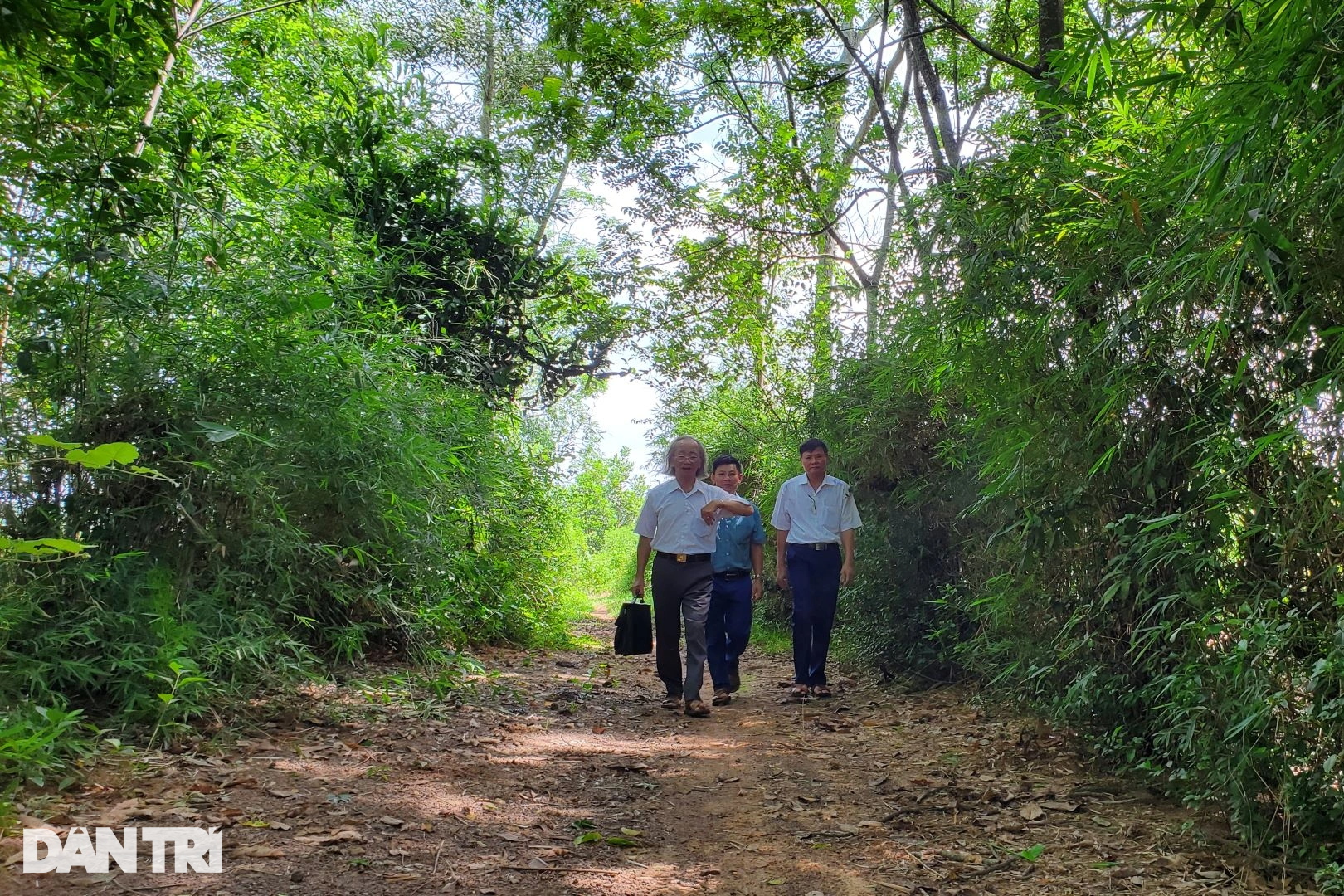
The path leading to Nam Giao Altar (Photo: Hanh Linh).
Strange story at the place where "the door to heaven" opened nearly 500 years ago ( Video : Hanh Linh).
On the ground, which was identified as the center of the altar, the local government, in collaboration with the Lam Kinh National Special Relic Site Management Board, built a square pillar made of bricks and placed an open-air altar.
Around the square pillar are bushes of blooming yellow and red peonies. To protect this sacred area, Ms. Viet’s family used a net to surround it.
Under the shade of a tree planted on the ground of the ancient Nam Giao altar, researcher Hoang Hung said: "In the dynasties, the capital was the most important part of the country. Besides defensive structures such as walls, ramparts, moats, palaces, and temples, an indispensable structure was the Nam Giao altar."
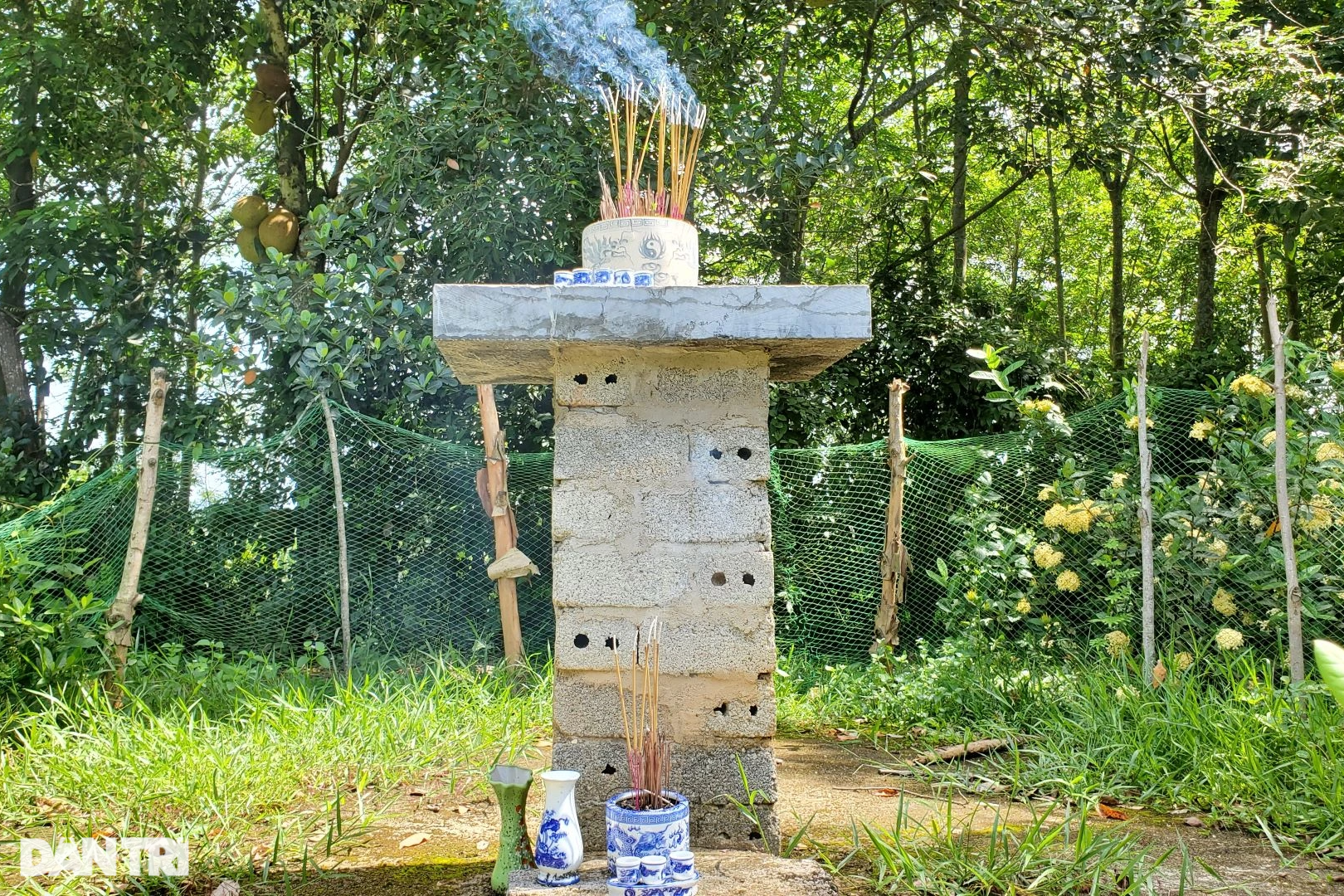
The place identified as the center of the Nam Giao altar (Photo: Hanh Linh).
According to the book "Dai Viet Su Ky Toan Thu": "In January of the first year of Hong Phuc (1572), the king built an altar to worship Giao here. In 1578, King Le The Tong rebuilt and worshipped Giao at this location."
The ancient geomancers painstakingly searched for and chose the sacred land for the Nam Giao Altar. It had to be a place where the sacred energy of heaven and earth converged so that every year in the spring, the Son of Heaven would perform a sacrifice to heaven and earth, praying for peace and prosperity for the nation and its people, and good crops. This was also the place where the king admonished himself to act on behalf of heaven, to govern the country and bring peace to the nation.
The Nam Giao Altar was formerly located on the top of Bai Am Hill, with the main facade facing south. This is considered the direction of the convergence of sacred spiritual energy between heaven and earth, the main direction that "opens the way" to the sky.
The area of the Nam Giao Altar is about 1.5-2 hectares, surrounded by a mud wall (trapezoidal), about 1.2m high, about 3m wide, the base of the wall is about 5m. In the middle of the altar is a high, square platform (like a house floor, the area of the platform is about 300m2).
In front, about 100m south of the Nam Giao Altar, there is an earthen rampart running through, extending all the way to Yen Truong (the old lord's palace), now Tho Lap Commune, Tho Xuan District. However, up to now, the system of earthen ramparts running through the Nam Giao Altar has been leveled to make way for traffic.
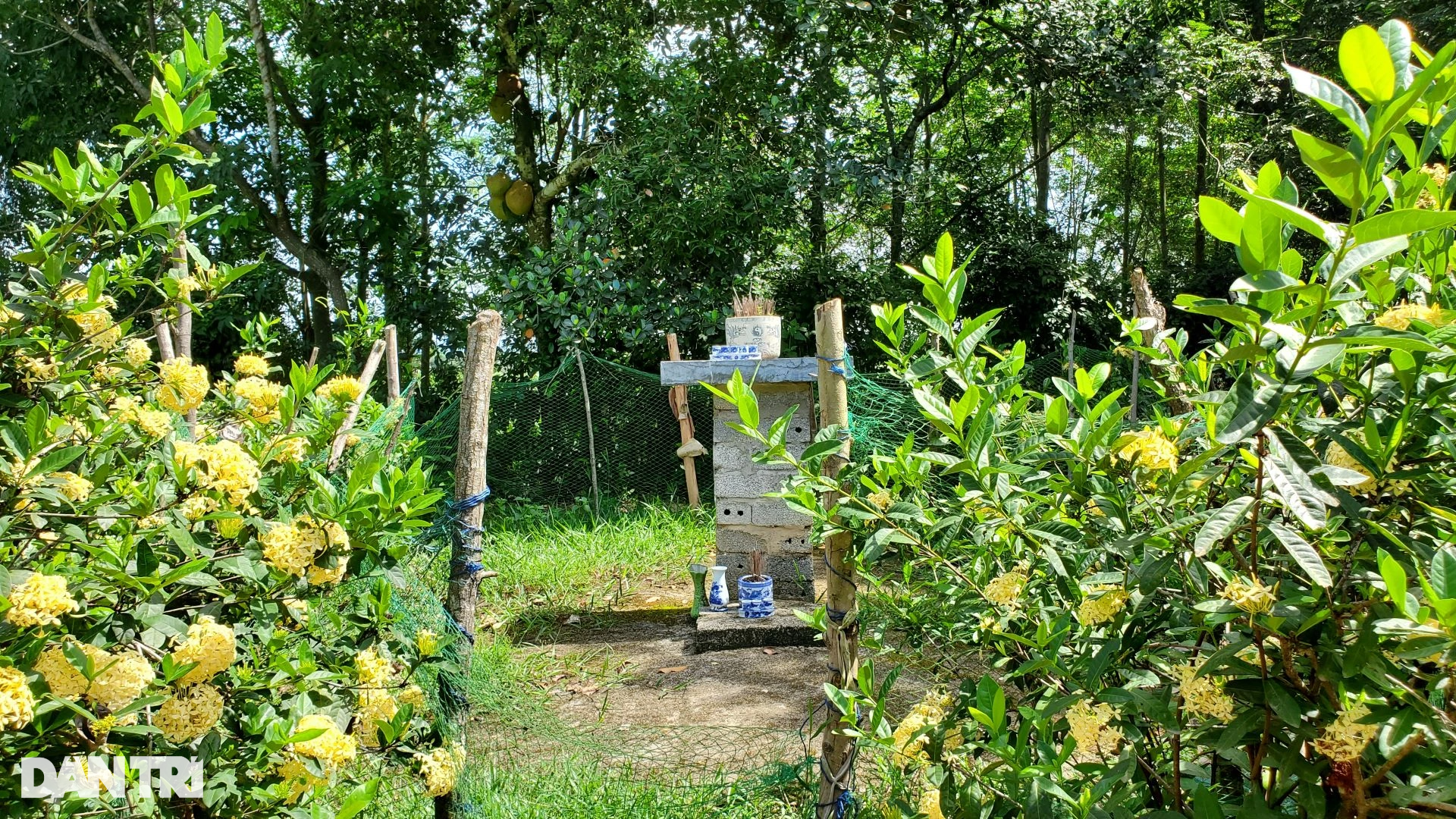
Once considered an "open door" place for the king to pray for national peace and prosperity, it is now covered with grass and trees (Photo: Hanh Linh).
Mr. Hoang Quy Tien - former Party Secretary of Xuan Chau commune, now Thuan Minh commune - said that when he was young, he and his friends herded buffaloes, played hide-and-seek, and fought mock battles in the Nam Giao area.
In 1965, the entire appearance of the Nam Giao Altar area was still intact with its ancient appearance. By 1985, the locality leveled the land for cultivation and settlement.
Mrs. Hoang Thi Viet's family is living on the land identified as the Nam Giao Altar of the capital Van Lai - Yen Truong. According to Mrs. Viet, when she moved here, dug the foundation to build a house, cleaned the garden, she had to carry away a lot of broken pottery and old tiles.
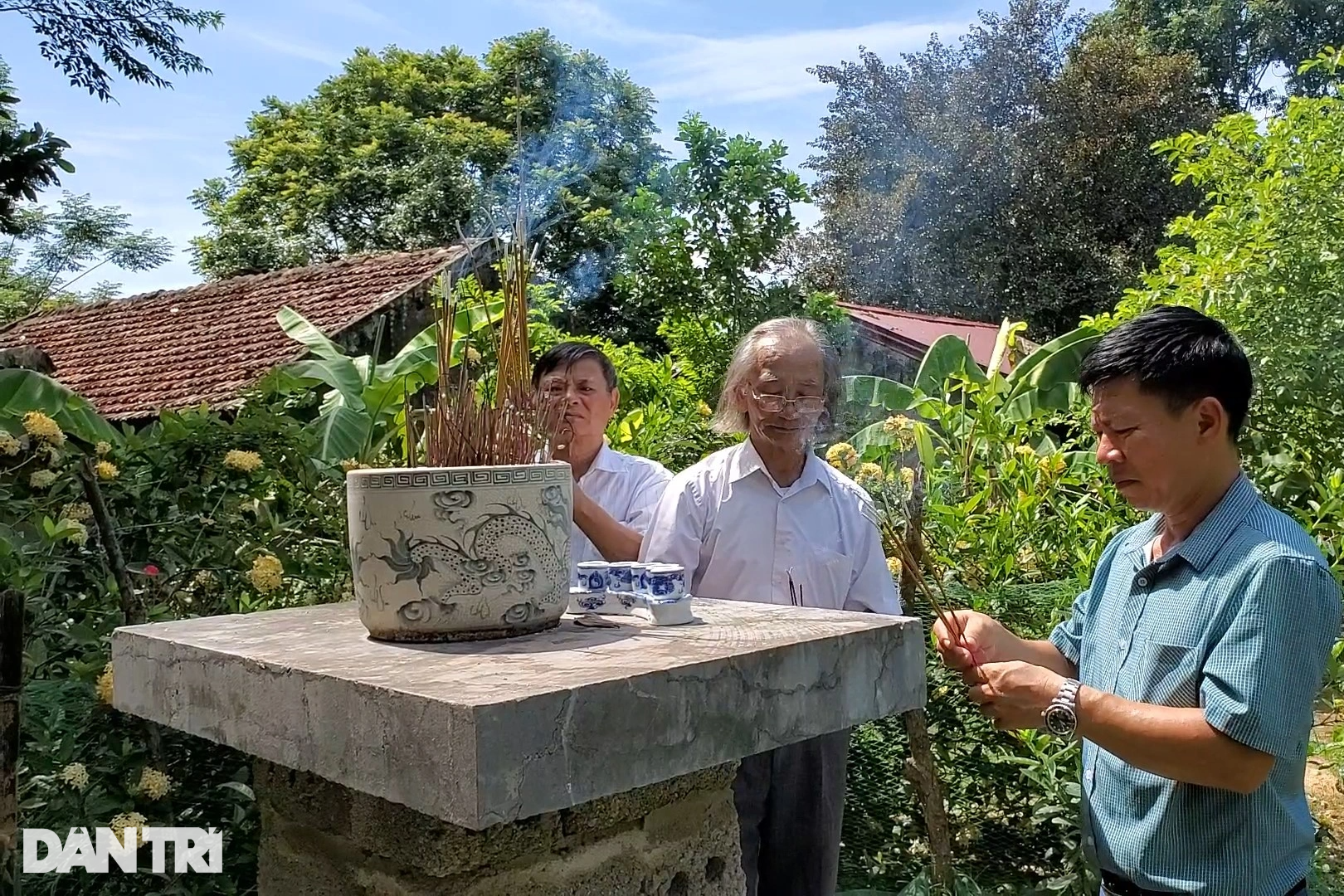
The land at Nam Giao altar is sacred, so people come to offer incense on weekends, holidays, and Tet (Photo: Hanh Linh).
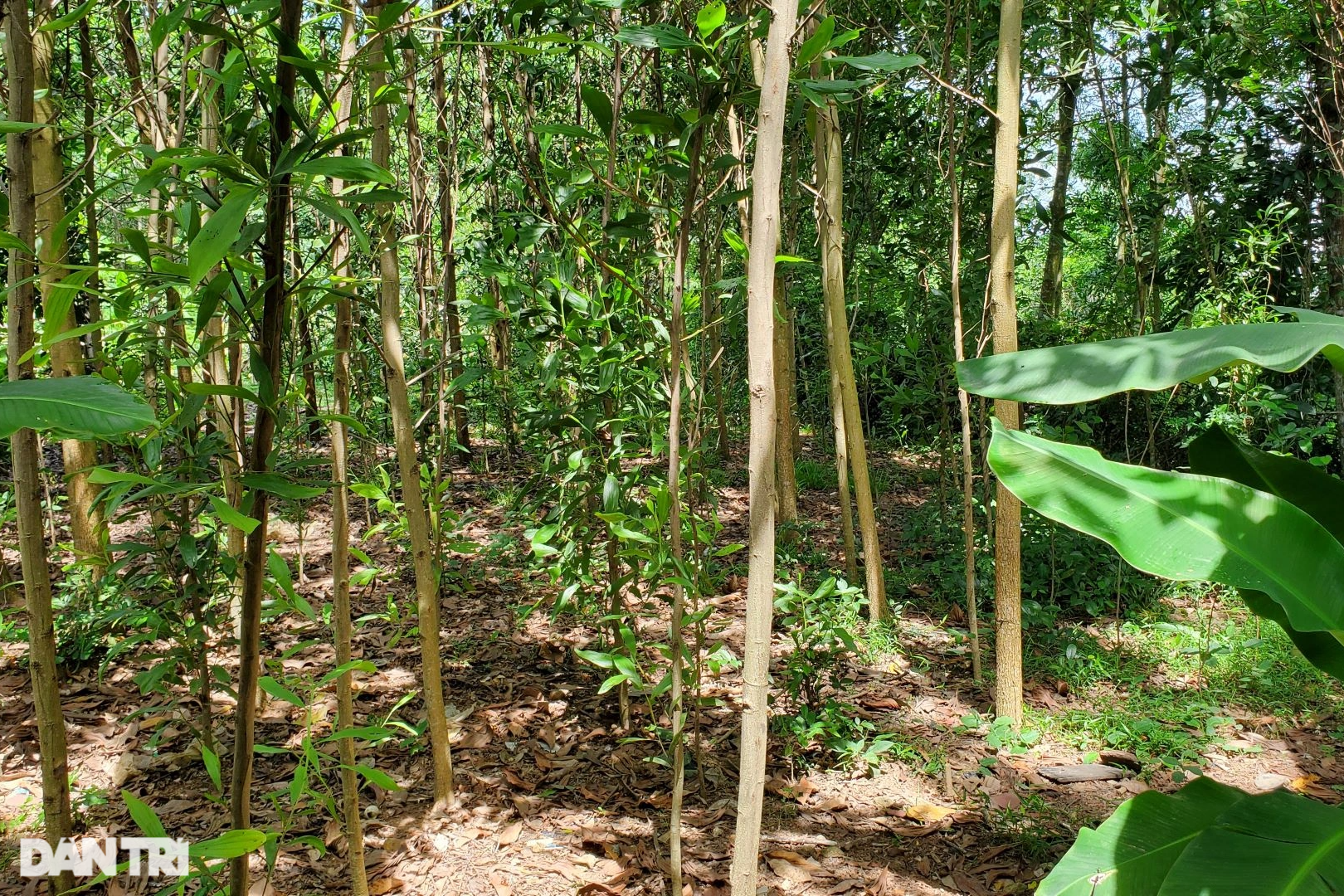
Ms. Viet's family does not dare to raise buffalo, cows, or pigs, and only plants trees in the area around the Nam Giao altar (Photo: Hanh Linh).
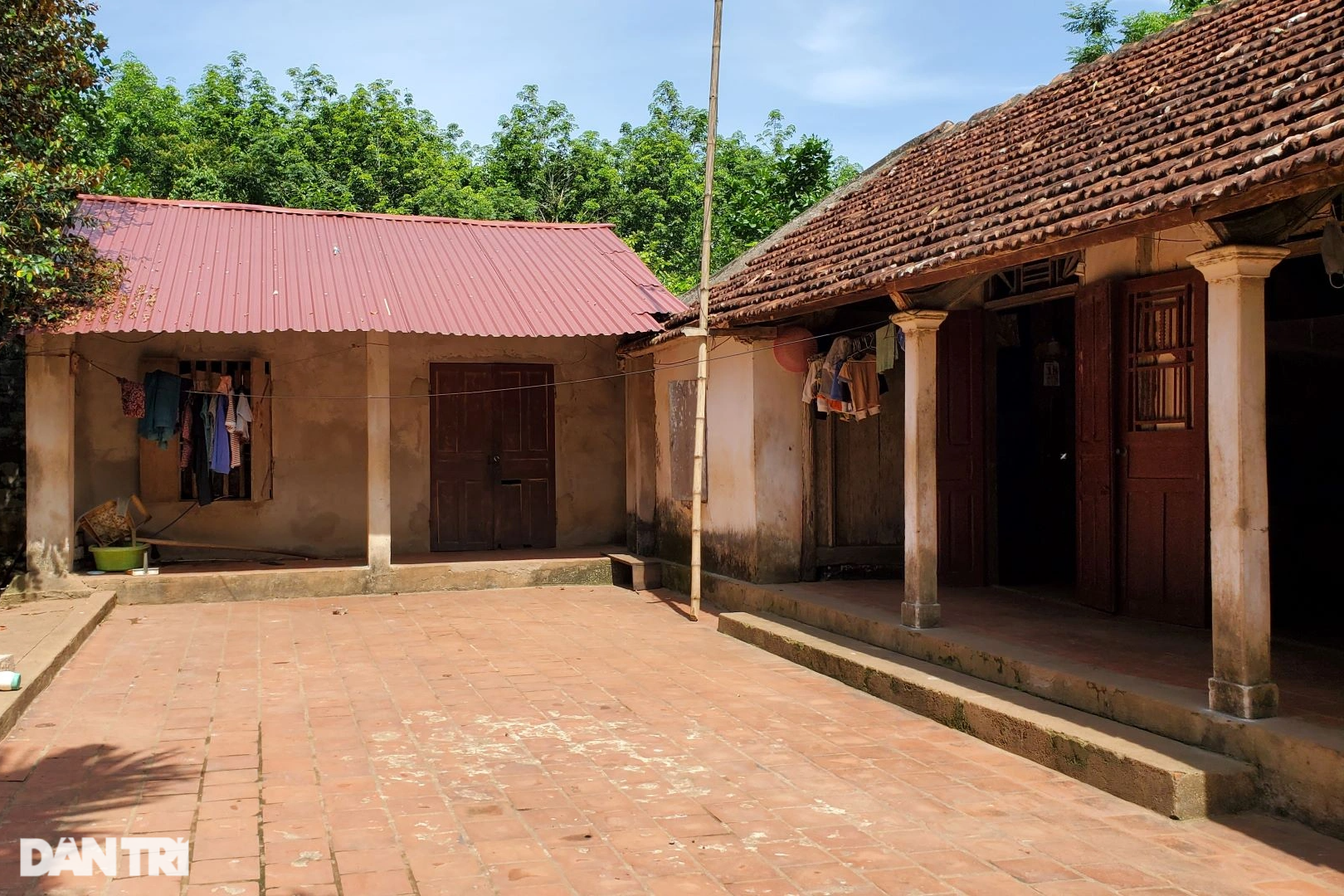
The house of Ms. Hoang Thi Viet's family was built on the land identified as the area of the Nam Giao altar (Photo: Hanh Linh).
The hundred-year-old well has only one water level.
Leaving the Nam Giao altar, following researchers Hoang Hung and Phan Thanh, we headed north, about 300m from the altar, in a dense grove, close to the edge of the rice field. Researcher Hoang Hung said that there was a well inside, which the locals called Am well.
According to Mr. Hung, this is an ancient well that remains from the ancient capital of Van Lai. The well is located right at the foot of Bai Am hill.
Through research, this well was not dug by humans but was a well created by nature. When discovering this precious water source, the ancients built a bank and built a well.
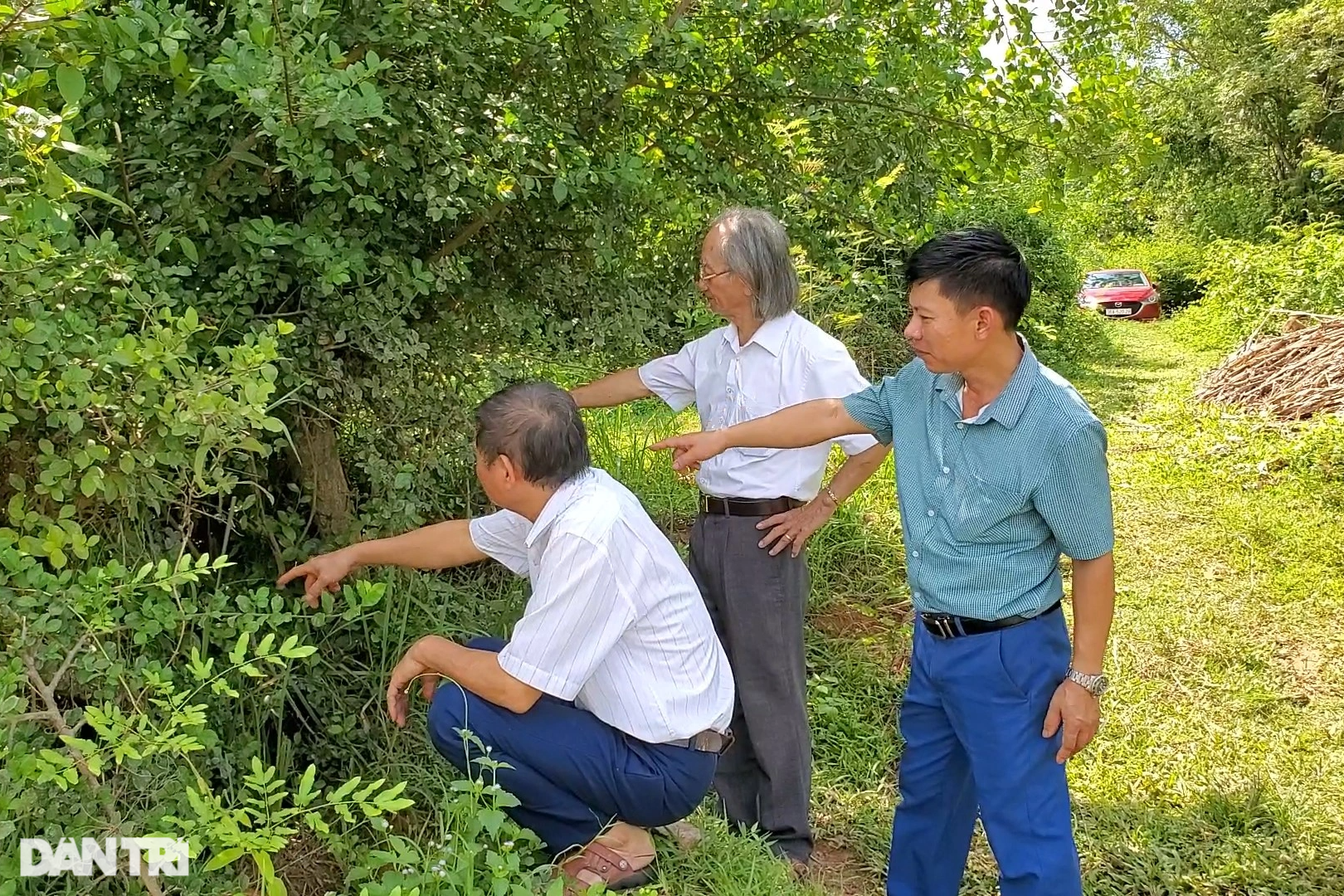
The area identified as Am well is located in a lush green grove (Photo: Hanh Linh).
"The Dragon Eye wells are a precious source of water for daily life in the royal palace, while the Am well water is used for worshiping at the Nam Giao altar. The well water is used to make and steep tea, so it is called Am, like Am Tuu (wine), Am Thuc, Am Tra, etc.", Mr. Hung analyzed.
According to our observations, at the place identified as Am well, grass and trees grow lushly and green. Am well seems to be hidden, lying under the bushes, with clear blue water.
Ms. Hoang Thi Viet said that before, her family did not have a tank, so they often used water from Am well. The well water is clear, cool, and sweet.
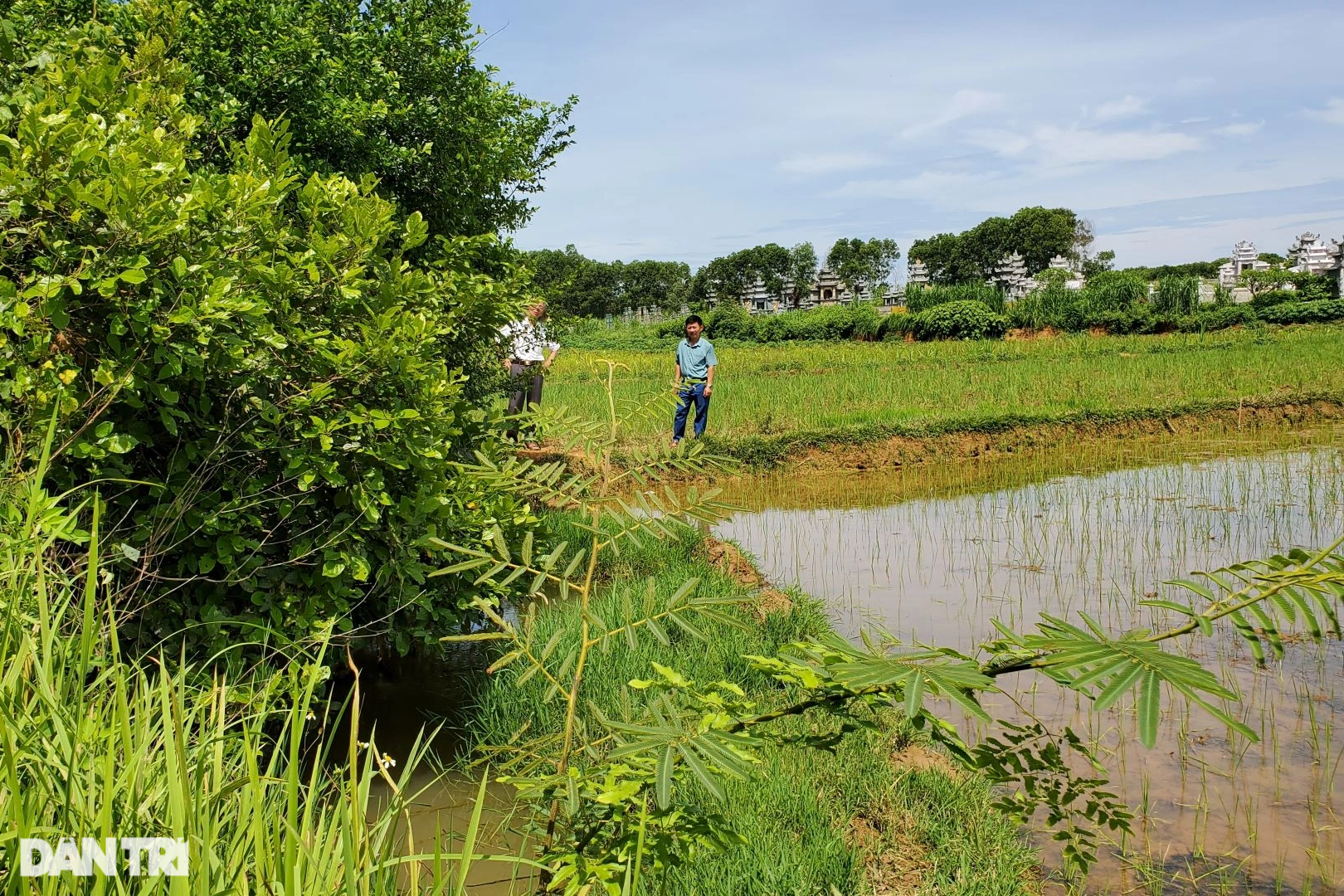
Although located next to the fields, strangely, the water in Am well has never dried up or become cloudy, and still maintains the same water level (Photo: Hanh Linh).
According to Ms. Viet, in nearly 40 years of living near Am well, she has never seen the well water change color or water level.
"There were storms, heavy rain, strong winds, the water outside the fields rose high and became turbid, but Am well still maintained its water level and was clear. When the fields were cracked and there was a continuous drought, the water in Am well was still regulated and did not change," said Ms. Viet.
Mr. Lu Van Truong, a civil servant of Culture and Society of Thuan Minh commune, said that the well used to be square, with four sides lined with wood. Currently, the wood is still intact under the well, a precious type of wood that is not corroded by water.
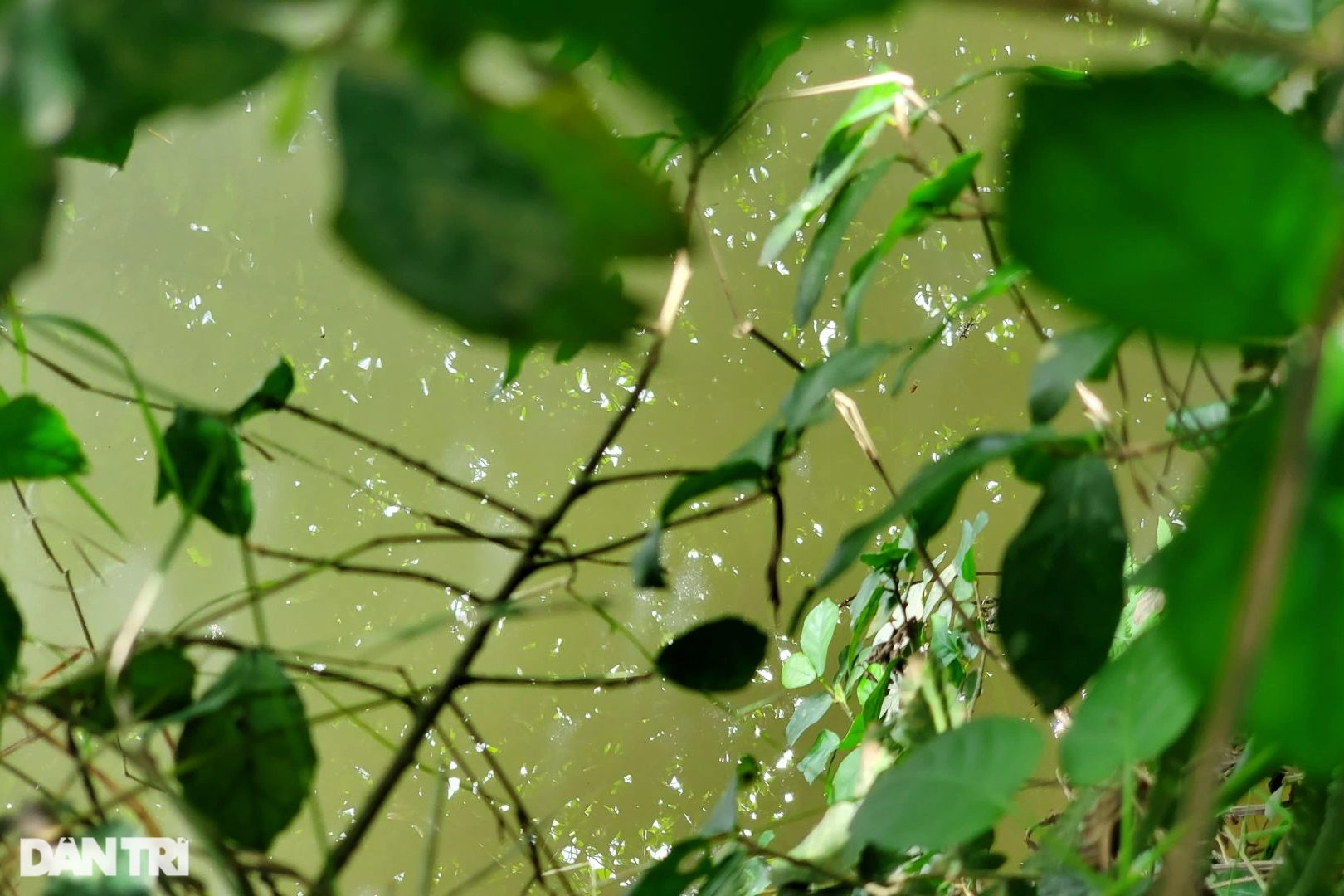
The water from Am well was once used by kings of the Later Le Dynasty to worship heaven and earth, praying for national peace and prosperity (Photo: Hanh Linh).
According to Mr. Truong, opposite the Am well is a land shaped like a big bat's head. This is a land of great wealth, sacred energy, good land, and blessings. In the four sacred animals (Dragon, Unicorn, Turtle, Phoenix), adding a bat makes it five blessings.
In previous feudal dynasties, in the royal palace, the lord's palace or places of worship, temples and shrines often carved images of bats spreading their wings and flying, holding the word "blessing" in their mouths.
"Bai Am Hill (where Nam Giao altar is located) is located on the wing of a big bat, and Am Well is located on the bat's chest. This is a sacred land that needs to be preserved and protected," said Mr. Truong.
Source link


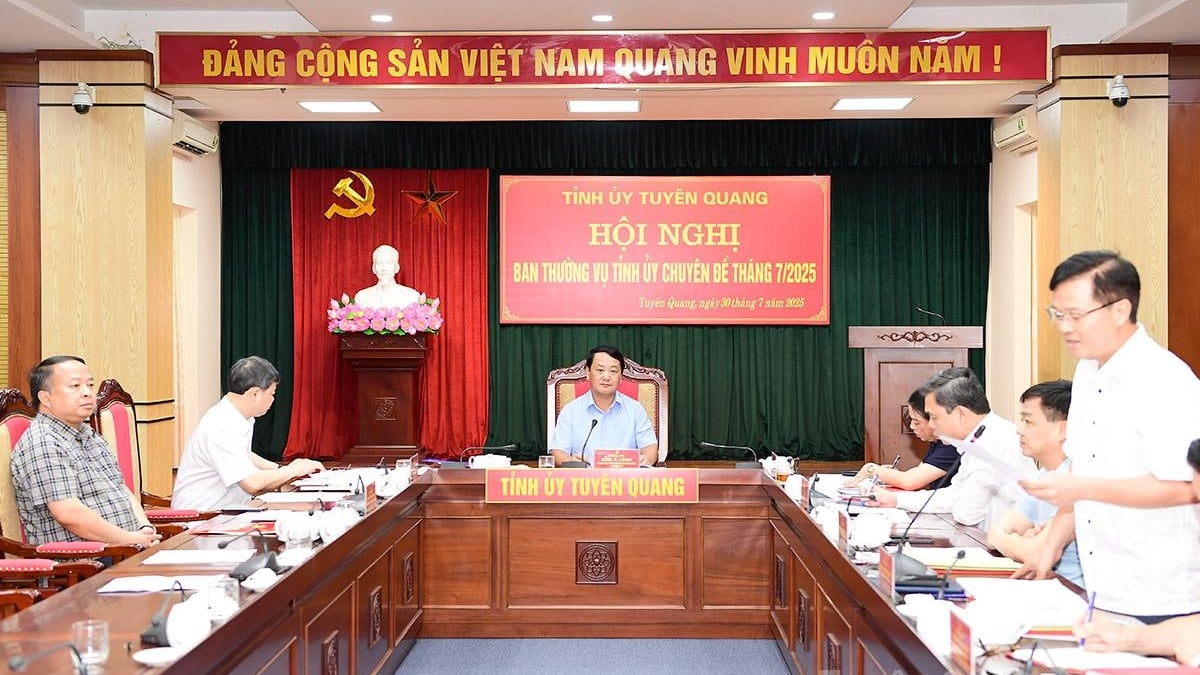




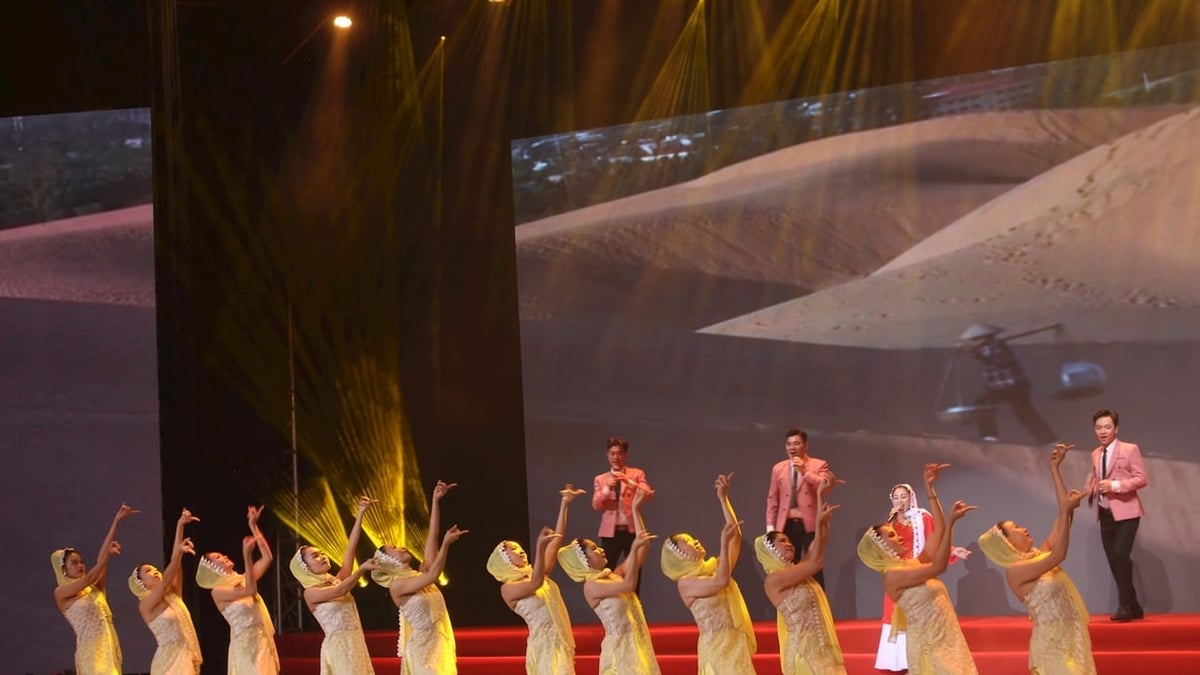

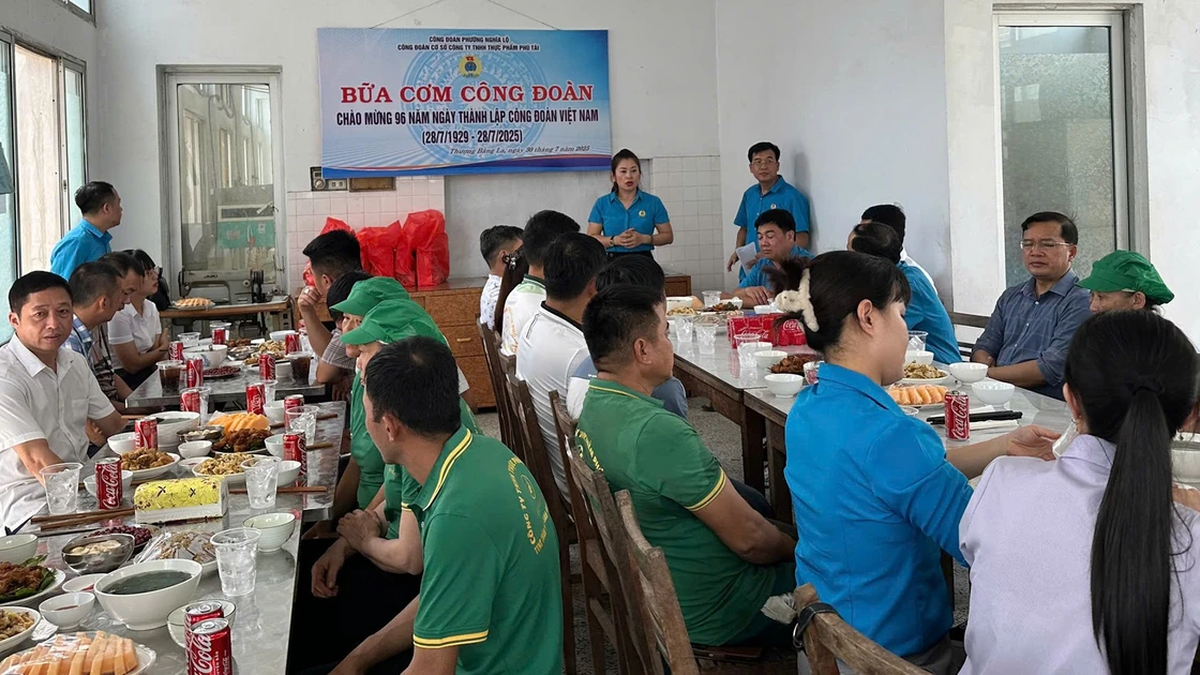

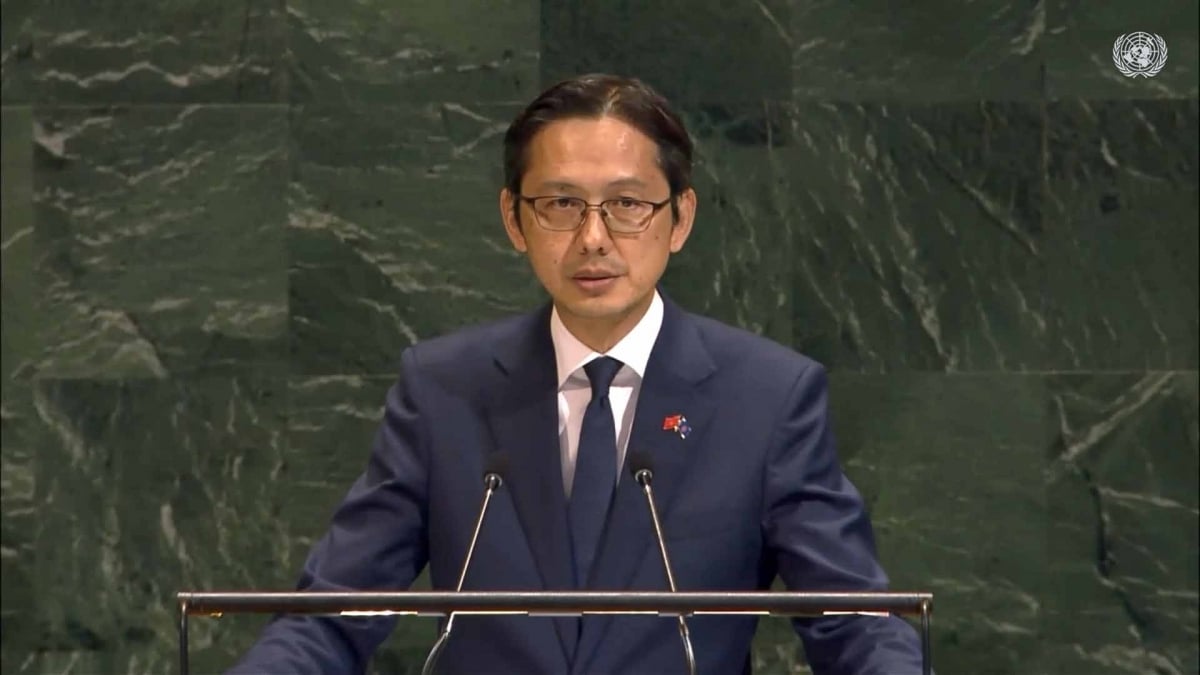

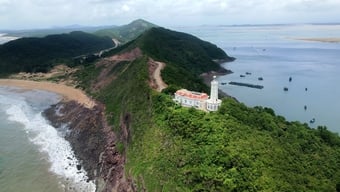

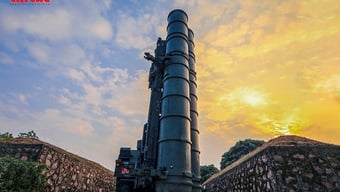
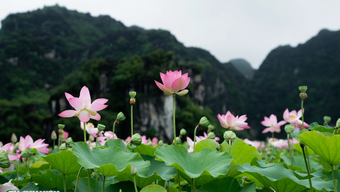

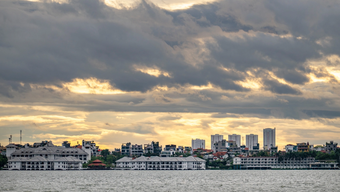

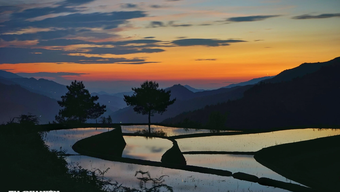
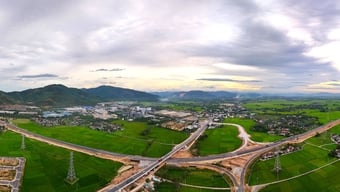

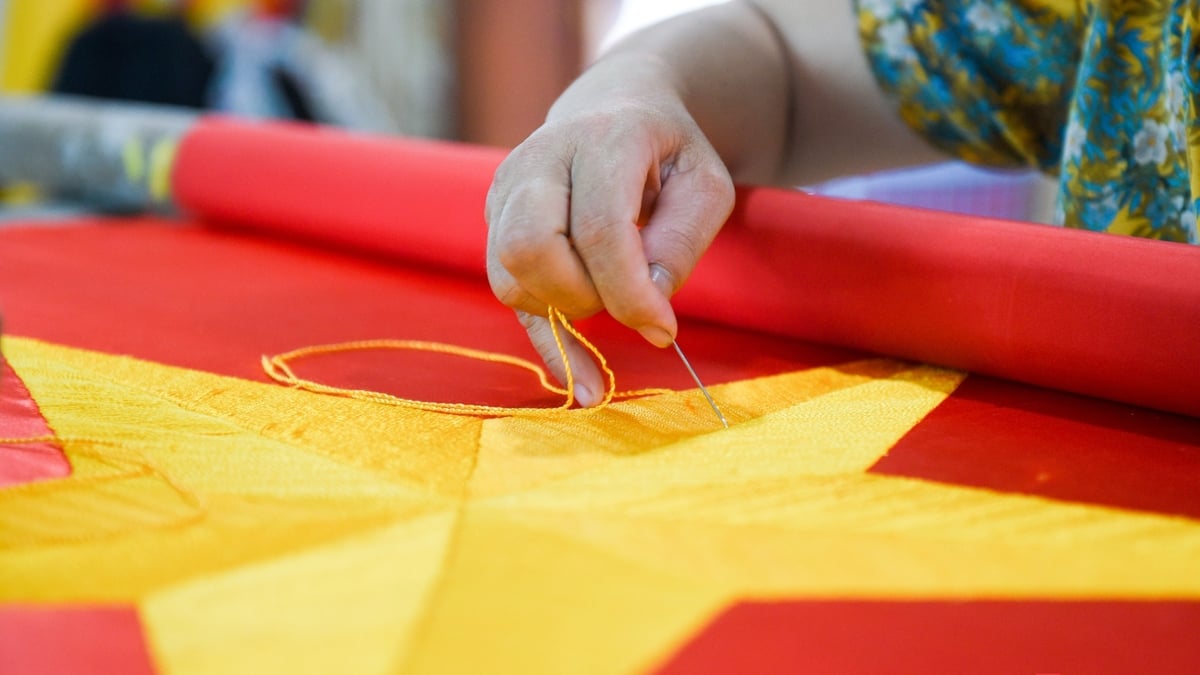
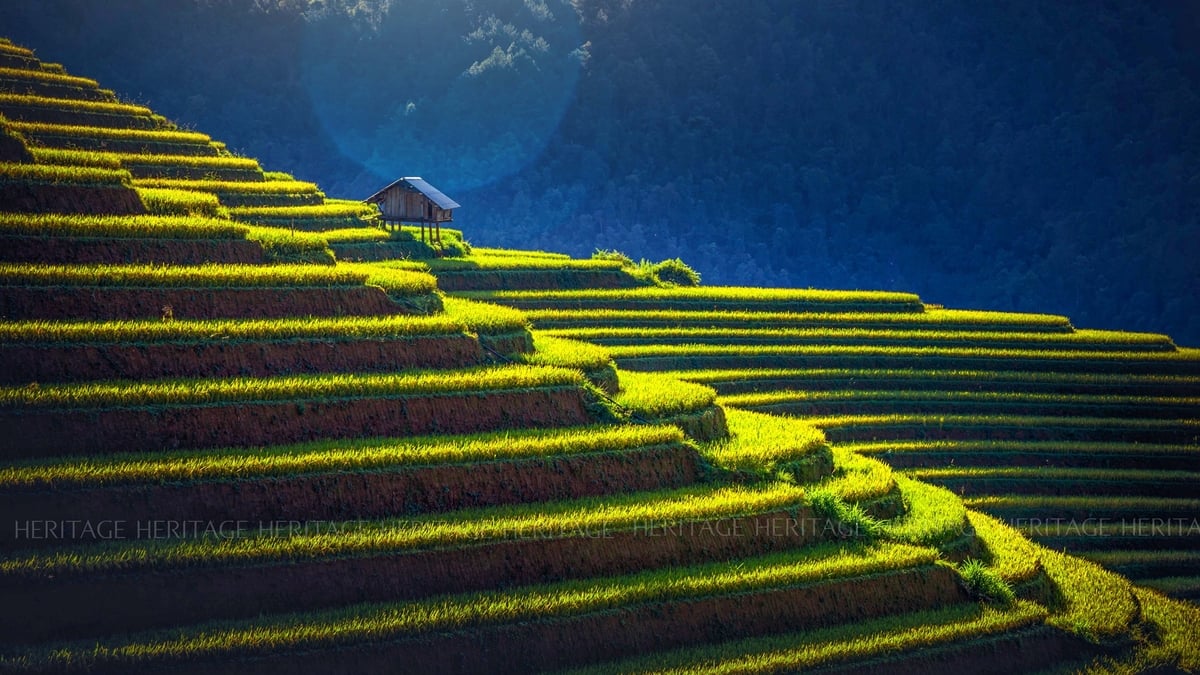






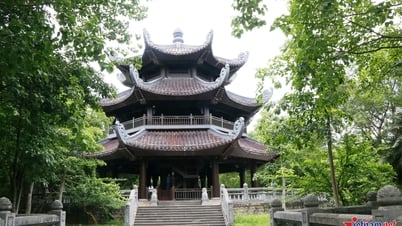



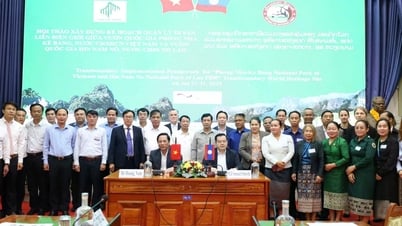

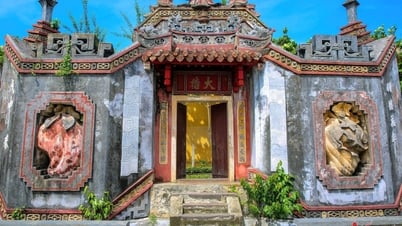


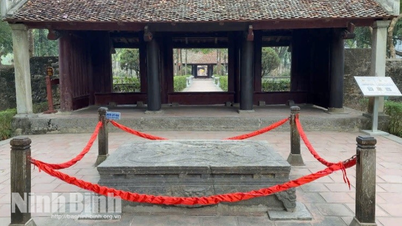




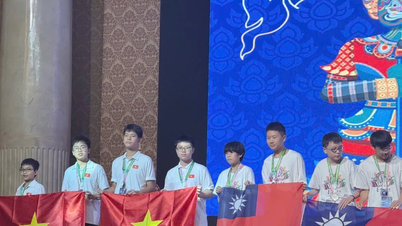








![[Maritime News] Container shipping faces overcapacity that will last until 2028](https://vphoto.vietnam.vn/thumb/402x226/vietnam/resource/IMAGE/2025/7/30/6d35cbc6b0f643fd97f8aa2e9bc87aea)







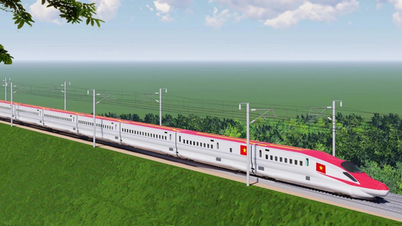








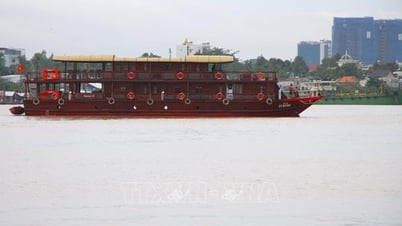



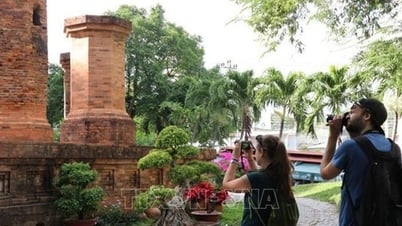

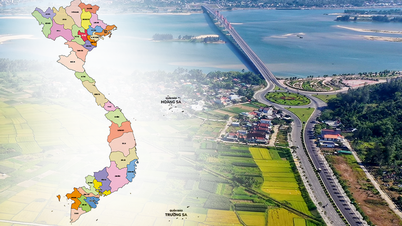




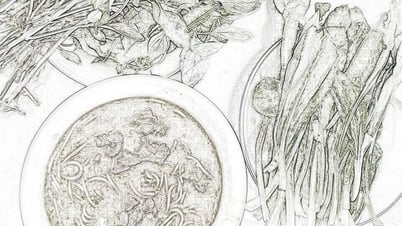
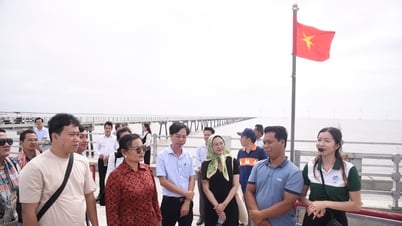


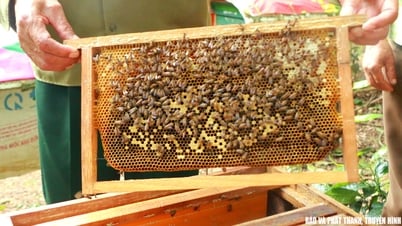

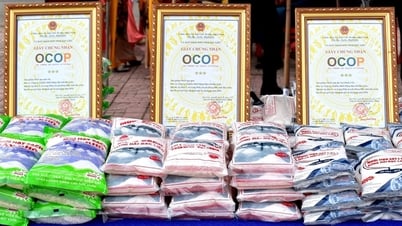
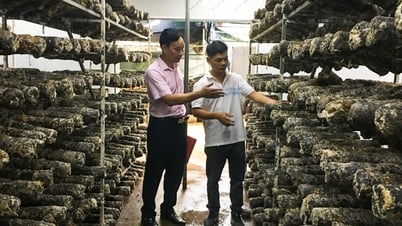








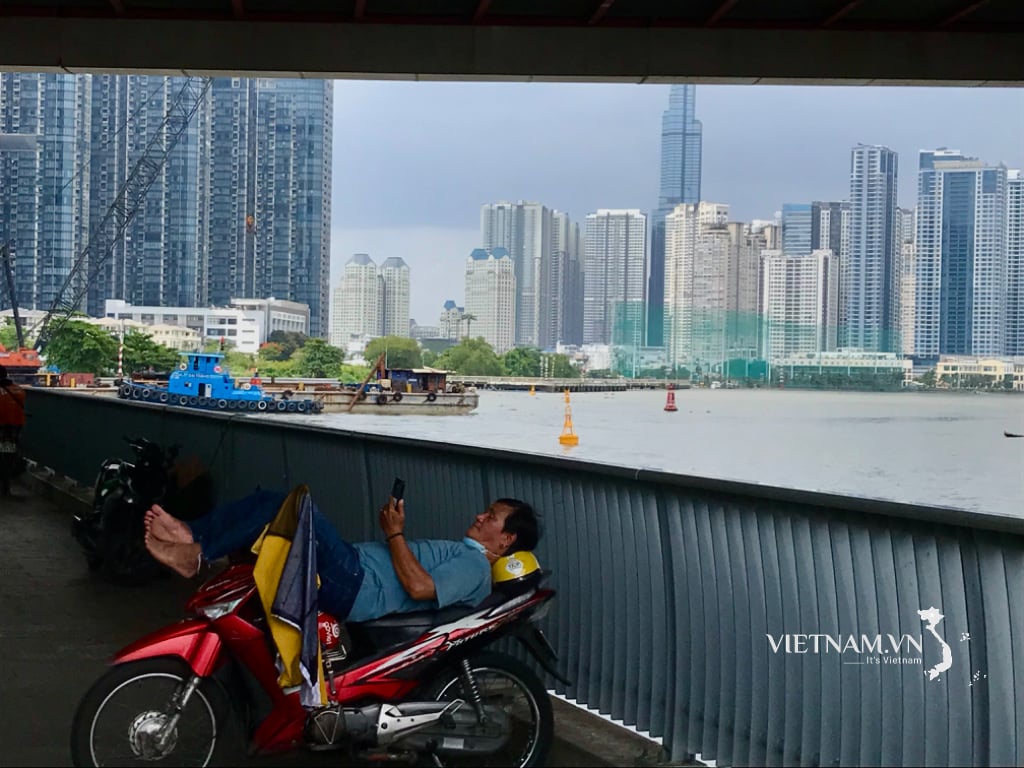
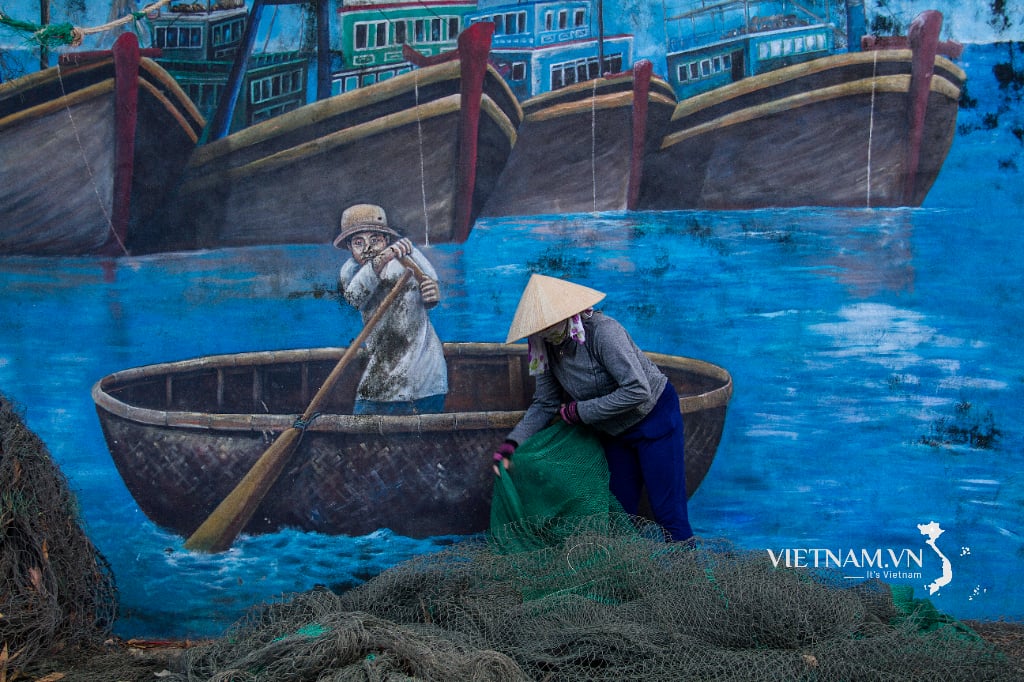
Comment (0)